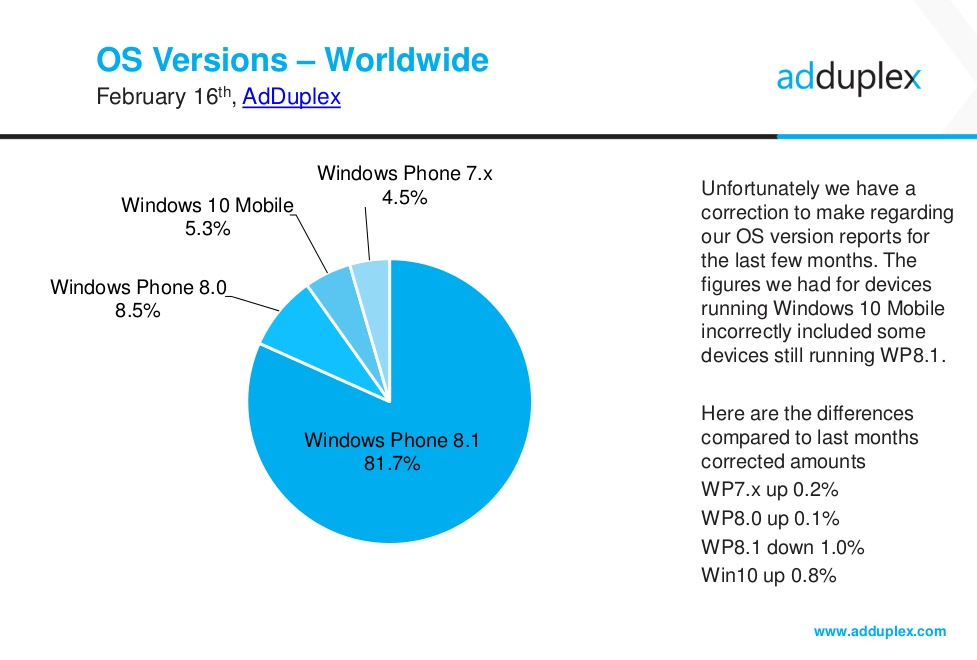Windows 10 Mobile only at 5 percent according to AdDuplex due to correction

AdDuplex has released their monthly numbers for measuring the Windows Phone ecosystem. Perhaps the biggest news to come for February was the down revision of the Windows 10 Mobile numbers compared to Windows Phone 7.x and 8.x.
The revision is not due to people dropping off the next-gen OS but rather to the incorrect inclusion of some devices still running Windows Phone 8.1.

As a result, the previous month's report of 9.5 percent for devices running Windows 10 Mobile drops to a much more sobering 5.3 percent.
Windows 10 Mobile is currently only available to two segments of users:
- Windows Insiders who opt in
- New devices like Moly X1, NuAns NEO, Lumia 550, 650, 950, or 950 XL
Although there have been isolated reported of official upgrades most users with phones running Windows Phone 8.1 have not had the option to update to Windows 10 Mobile automatically.
Unfortunately, with such a low number for Windows 10 Mobile it still makes little sense for developers to aggressively target the platform versus Windows 10 for PC. Microsoft is banking on developers making mobile versions of their apps due to the ease of Windows 10 tools but clearly there is some time yet for the ecosystem to transition for users.
About AdDuplex
The numbers from AdDuplex are collected through their in-app advertising that is prevalent in over 5,000 apps in the Windows Phone Store. That data serve as an important metric within the Windows Phone ecosystem. The full AdDuplex report for February will be posted Monday, February 22 on blog.adduplex.com.
All the latest news, reviews, and guides for Windows and Xbox diehards.

Daniel Rubino is the Editor-in-chief of Windows Central. He is also the head reviewer, podcast co-host, and analyst. He has been covering Microsoft since 2007 when this site was called WMExperts (and later Windows Phone Central). His interests include Windows, laptops, next-gen computing, and wearable tech. He has reviewed laptops for over 10 years and is particularly fond of 2-in-1 convertibles, Arm64 processors, new form factors, and thin-and-light PCs. Before all this tech stuff, he worked on a Ph.D. in linguistics, performed polysomnographs in NYC, and was a motion-picture operator for 17 years.
